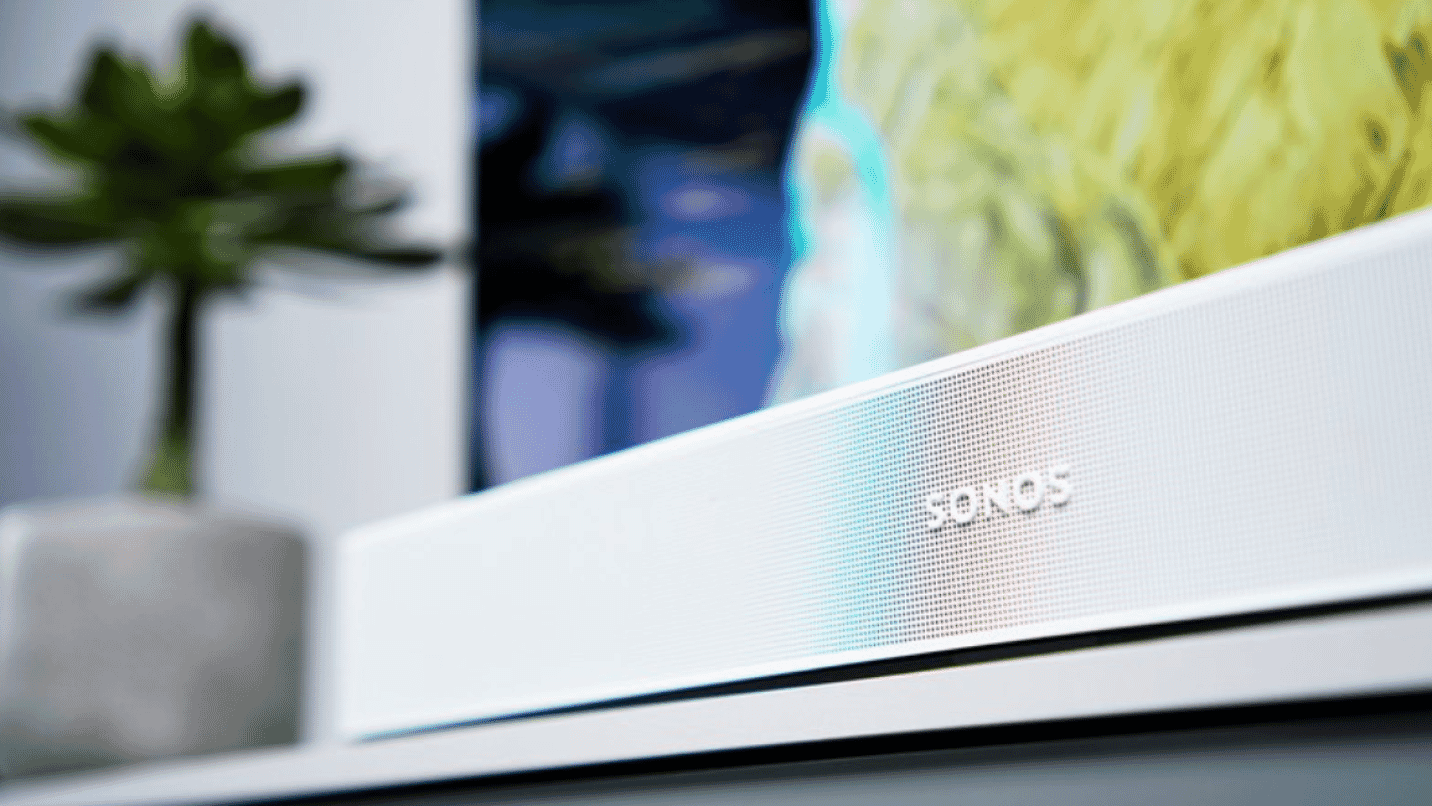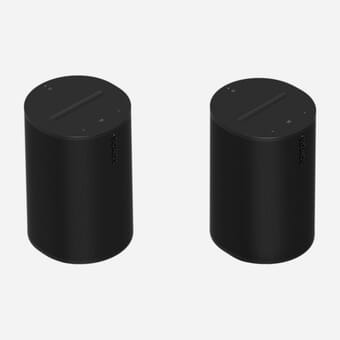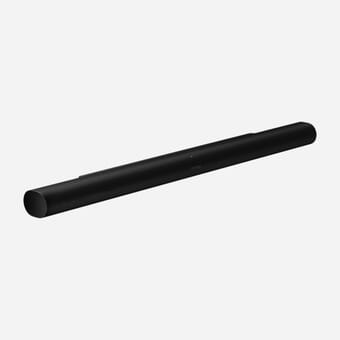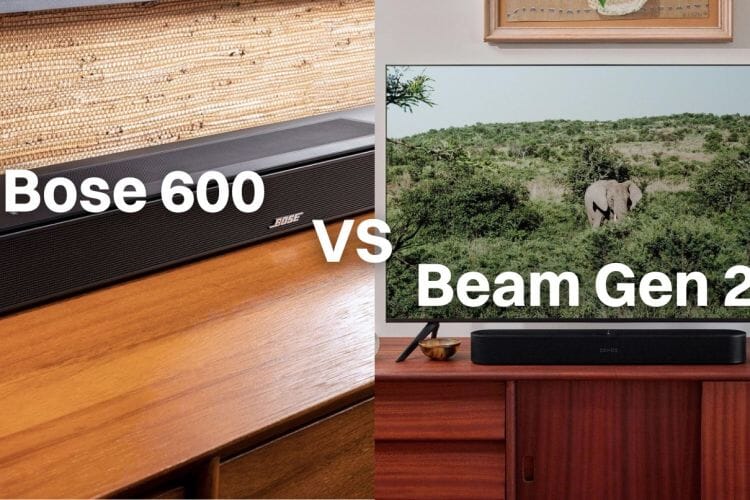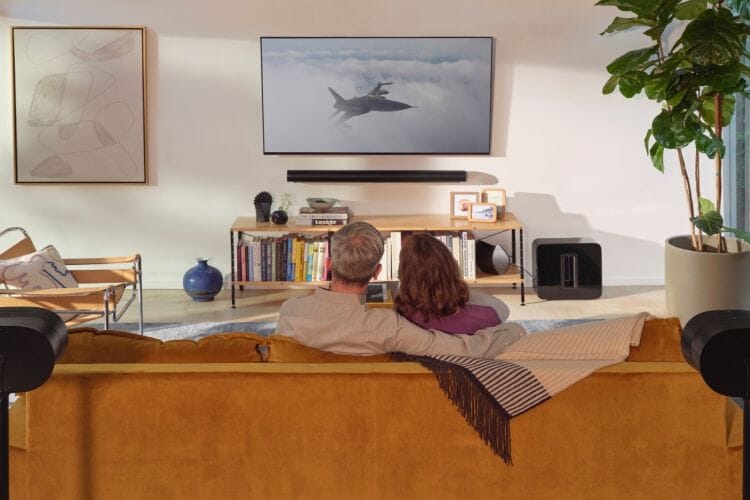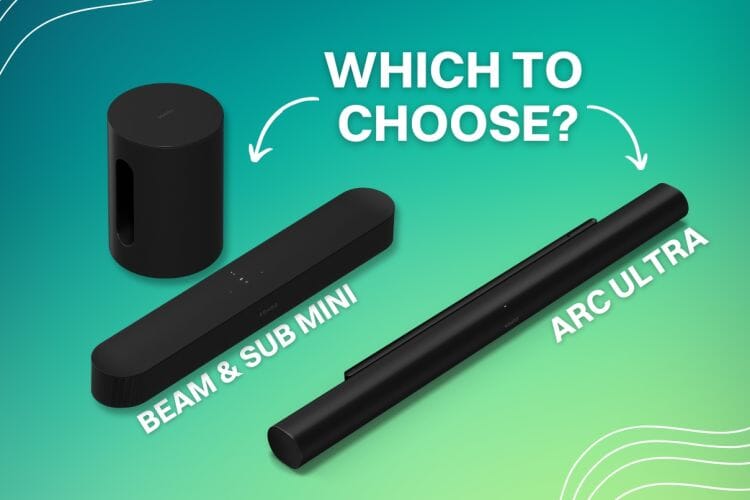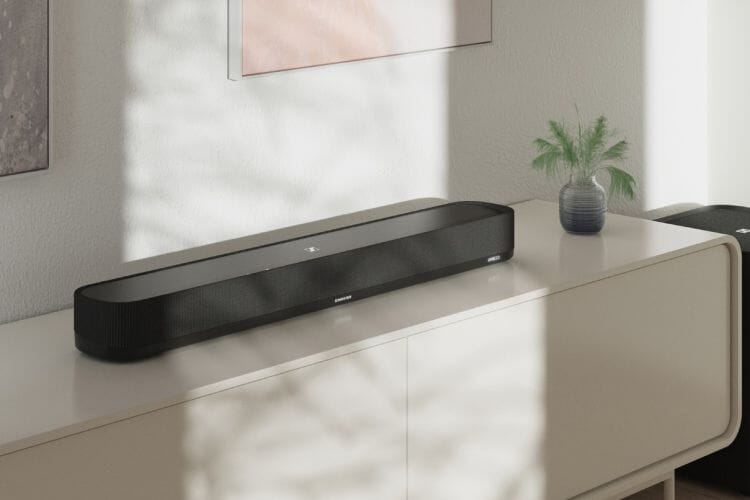The Complete Sonos Beam (Gen 2) Buyers Guide
Released to replace the original Sonos Beam in 2021, the Sonos Beam (Gen 2) is a multi-award-winning compact soundbar that is still widely regarded as one of the best value-for-money options on the market right now.
Featuring a five-driver multidirectional array, Dolby Atmos, HDMI eARC support, and a sleek and stylish design, the Sonos Beam (Gen 2) is a more than convincing sequel that has well and truly earned its place in compact soundbar folklore.
However, with the likes of the Sennheiser Ambeo Mini and the Bose 600 hot on its heels, it begs the question, is the Beam (Gen 2) still worth it in 2025?
Well, considering it's was ranked as What Hi-Fi's best soundbar under £500 late in 2024, we'd suggest this is a clear indication that the Beam (Gen 2) is still a more than worthy option this year.
Despite lacking the hard-hitting bass output and dedicated upward-firing drivers of its bigger siblings, the Sonos Arc Ultra and Sonos Arc, the Beam (Gen 2) has redefined the mid-range soundbar game. Best of all, its great performance makes the small investment (in comparison) well worth it.
We've put the Sonos Beam (Gen 2) to the test in a range of home cinema applications for the purpose of this review to help you decide if it's worth the money and if its still the best compact soundbar for your space.
Article Breakdown:
Haven't got the time to read? Watch our Sonos Beam (Gen 2) Review on YouTube.
Sonos Beam (Gen 2): Strengths & Weaknesses
| Sonos Beam (Gen 2) Strengths | Sonos Beam (Gen 2) Weaknesses |
| ✓ Size-defying sound performance | ✖ No HDMI Passthroughs |
| ✓ Supports Dolby Atmos and more | ✖ No dedicated up-firing speakers |
| ✓ Sleek & Compact design | ✖ No Bluetooth functionality |
| ✓ Simple to setup and upgrade |
Sonos Beam (Gen 2) - RRP: £499 (See Latest Deals)
Price
When it was released, the Sonos Beam (Gen 2) launched with an original price tag of £449, which was only slightly more expensive than its predecessor. However, following a price adjustment that affected many Sonos products, the Beam (Gen 2) underwent a price increase and now retails at £499.
That being said, as one of the longer standing products in the Sonos range, the Beam’s price does tend to fluctuate, and it’s worth keeping an eye on the market to see if any deals arise. (See Latest Deals)
Why Buy From Smart Home Sounds?
We offer an Extended 6 Year Warranty on all Sonos products, as well as 30 Day Extended returns and Free Next Day Delivery*. Looking for more personal advice? Contact our team of experts today.
Shop all Sonos Wireless Speakers.
Design

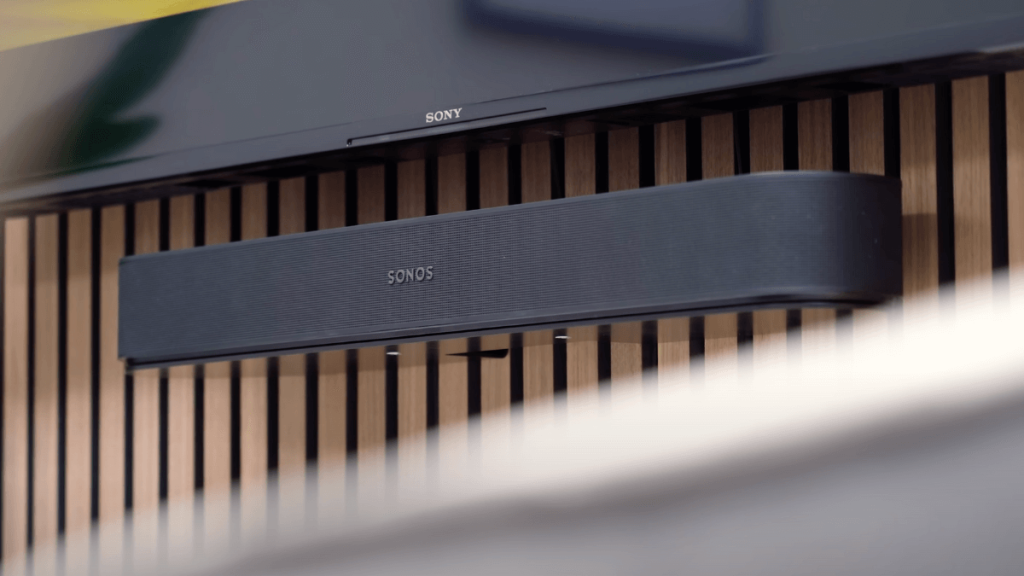
Available in both matte black and matte white, the Sonos Beam (Gen 2) is sleek, compact and remains cohesive with the entire Sonos wireless speaker range.
At a glance, the Beam (Gen 2) looks almost identical to the original Beam, sporting the same compact footprint as its forebear. The most notable difference between the two is its polycarbonate wraparound grille, which has been designed to be easier to clean and more durable than the fabric grille found on its predecessor.
With a width of 65.1cm, we often suggest the Sonos Beam (Gen 2) is best suited for TV’s 55 inches and smaller. However, this is just general advice, and its performance is more than suitable to match a larger TV.
The top panel remains the same, featuring the capacitive touch controls we have become accustomed to seeing with Sonos, including volume, play/pause, skip/previous, and a microphone privacy button for voice control.
On the rear, things remain nice and simple too. You will find your HDMI connection point, an Ethernet port, a join button and the AC power input for straightforward setup.
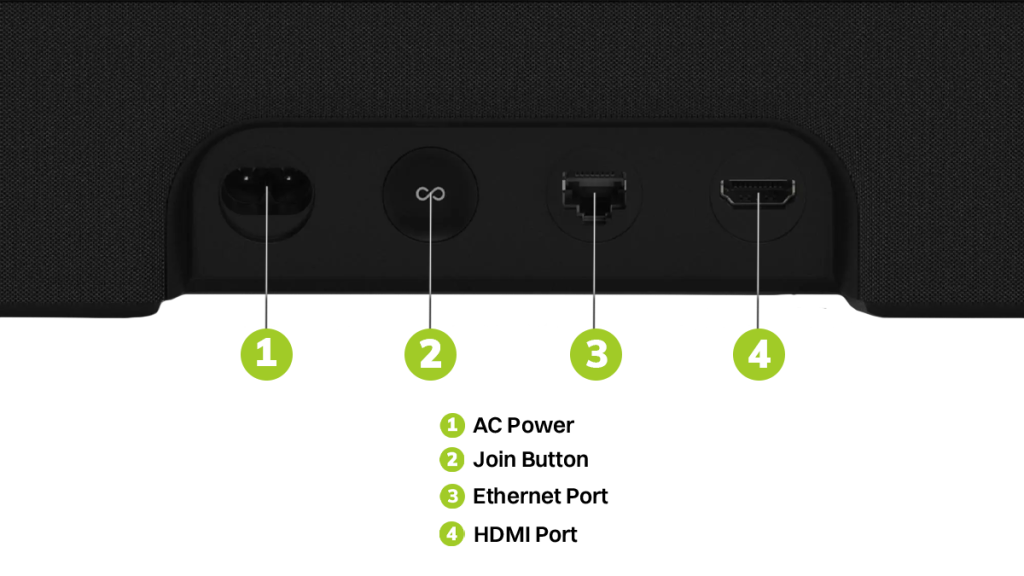
Internals
Internally, the Sonos Beam (Gen 2) has four front-facing elliptical mid-woofers and an improved centre tweeter that has been designed to produce crisper and clearer dialogue than the original Beam.
The Beam also utilises five Class-D amplifiers, while three passive radiators provide reinforcement for the low-end frequencies.
You may notice that the Beam (Gen 2) doesn’t feature any upward-firing drivers yet can deliver three-dimensional Dolby Atmos surround sound. Well, thanks to the 40% faster CPU than its predecessor and five-channel array, the Beam (Gen 2) relies on innovative psychoacoustic technology to create “phantom height channels” that blend with the rest of the audio channels to simulate overhead sounds virtually and create an encapsulating multi-dimensional soundstage.
Audio Performance
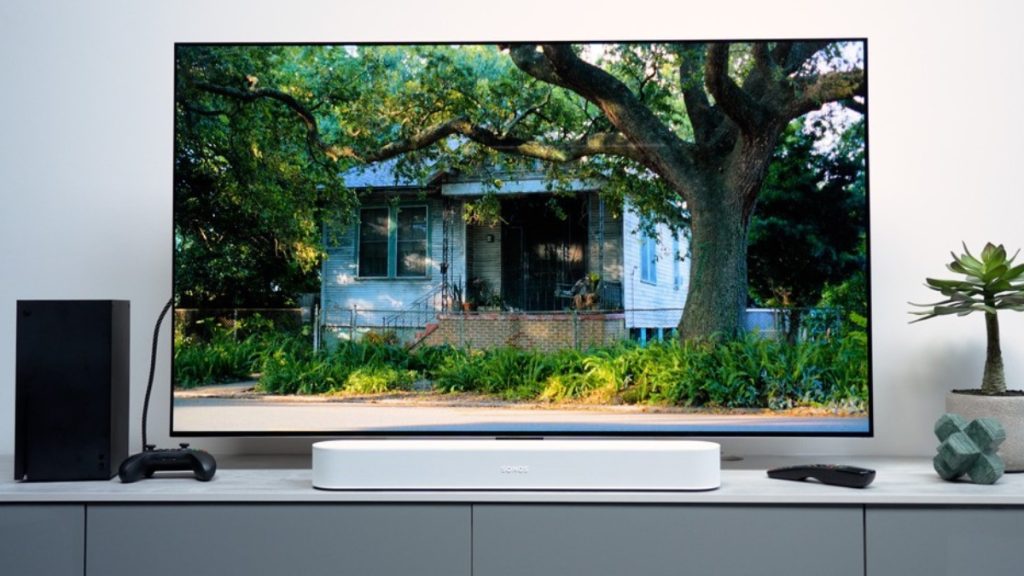
Despite its compact form factor, the Sonos Beam (Gen 2) delivers impressively immersive and size-defying sound that goes far beyond its form factor and is more than capable of filling the majority of spaces.
The Sonos Beam (Gen 2) is very versatile and supports a wide range of audio formats, including stereo PCM, Dolby Atmos, Dolby Digital, Dolby Digital Plus, Dolby TrueHD, multichannel PCM, and Dolby Multichannel PCM. This means that you can enjoy your favourite music, movies, and TV shows in the highest possible audio quality, regardless of the source. Its worth noting that there is decoding for DTS digital surround; however, this doesn’t extend to DTS:X.
For us, the vocals and centre channel clarity are phenomenal on the Beam and are undoubtedly this soundbar's standout features. Having tested the Beam (Gen 2) with a variety of different content, ranging from action-packed blockbusters to contemplative character-driven dramas, we love the way the centre channel clarity and dialogue help to cut the noise and deliver depth and details to scenes that you wouldn’t necessarily hear on many other soundbars of this size and price.
The Beam (Gen 2) is also capable of delivering a bass output that is clean and punchy straight out of the box. No, its not quite rumbling in your chest bass, but for a soundbar of this size, it offers plenty enough to fill small or medium-sized rooms.
Of course, you have the option to add either the Sonos Sub Mini or Sub 4 to really kick the bass up a notch. You could also opt to step up to the larger and more powerful Sonos Arc Ultra, which is another personal favourite soundbar of ours.
More: Sonos Arc vs. Beam (Gen 2) & Sonos Sub Mini: Which To Buy?
Although the Beam (Gen 2) doesn’t boast the same Dolby Atmos handling as the Arc or Arc Ultra (with dedicated upward firing drivers), it still handles the format much better than the majority of soundbars in its respective price range. For example, the Beam managed the dynamic scenes of James Bond: No Time to Die with ease, adding lifelike immersion to the hectic car chases and more depth and detail to the more nuanced and emotive scenes too.
Despite countless new competitors intent on taking its crown, there’s no doubt the Beam is still a class-leader in this department, with audio positioning that feels accurate, expansive and ultimately offers a realistic and compelling audio performance that’s hard to beat.
Along with being impressive for movies, TV and gaming, the Beam (Gen 2) is also a very musical soundbar in its own right. Once again, the centre channel clarity is partly to thank here, delivering vocals that feel both pure and pronounced. Dolby Atmos and spatial audio tracks are also impressive and deliver a lifelike, rich and immersive experience.
Want to hear the Sonos Beam (Gen 2) for yourself? Skip to 13:03 of our Sonos Beam (Gen 2) Review.
Dolby Atmos Enabled - What Does This Mean?
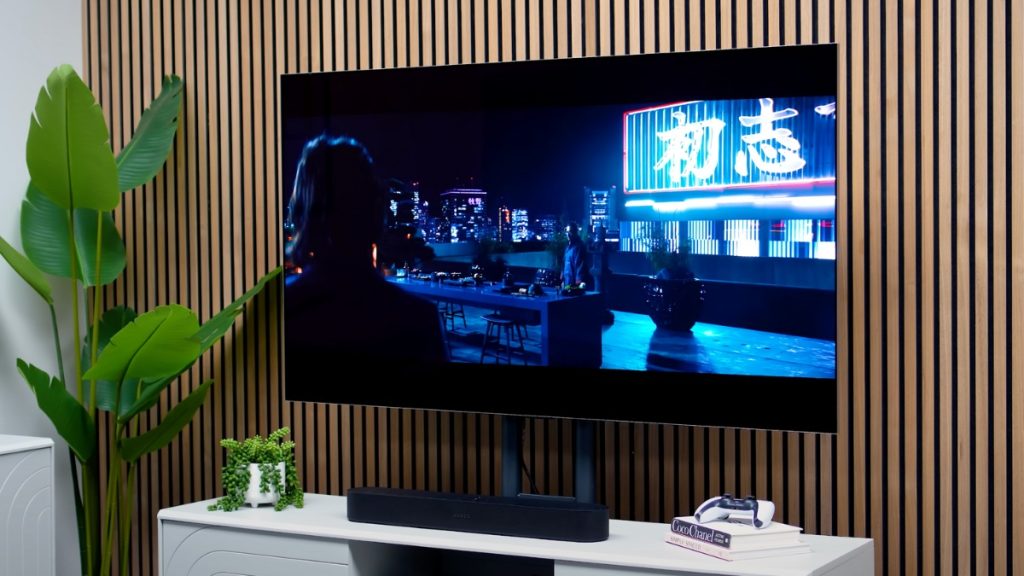
Dolby Atmos is arguably one of the most impactful surround sound formats for home cinema, and it's quickly becoming a must-have feature for soundbar users.
As an object-based sound format, Atmos allows audio producers to have more control over what you hear so they can create a soundstage that better replicates what’s happening on screen.
Dolby Atmos adds height channels, which allow sounds to be interpreted as three-dimensional objects. This makes for a much more immersive audio experience, as sounds can now come from above, below, and all around you.
To put this into context, imagine watching a movie scene with a helicopter flying overhead. With Dolby Atmos, the phantom height channels from your soundbar will activate to create the sound of the helicopter flying directly above you. It's like having your own private IMAX cinema in your living room.
Dolby Atmos is already supported by a wide range of soundbars and TV’s. With more and more content being released in Dolby Atmos every year, there's no better time to upgrade your home cinema system.
How Do I Get Dolby Atmos On My Sonos Beam (Gen 2)
Dolby Atmos requires you to have an HDMI eARC connection on your TV. This is because Atmos uses a higher data transfer rate than Dolby Digital or traditional stereo sound which are playable with a standard HDMI ARC.
Unfortunately, we can’t guarantee that every TV model with an HDMI eARC port supports Dolby Atmos. However, 99% of TVs with this connection option do support Atmos. If you're not sure or your TV has a standard HDMI ARC port, it's worth contacting your TV's manufacturer or the retailer you bought it from. They should be able to help you determine whether or not your TV supports Dolby Atmos.
Should You Add Rears Or A Subwoofer To The Sonos Beam (Gen 2)
If you’re looking for a simple to set up, compact device that can bring cinema-quality audio to your home, the Sonos Beam (Gen 2) will be a great option.
However, the real beauty of Sonos lies in the ecosystem itself. With the option to seamlessly integrate a Sonos Subwoofer, a pair of Sonos Surround Sound Rears, or both to form a complete Sonos home cinema, its understandable to be torn trying to figure out which is the best way to go.
Truthfully, there is no right or wrong here; each element will enhance your home cinema’s performance, but we recommend picking the components that match your listening preferences, space and budget.
More: Sonos Home Cinema Upgrades | Sub vs. Surrounds
Adding a Subwoofer
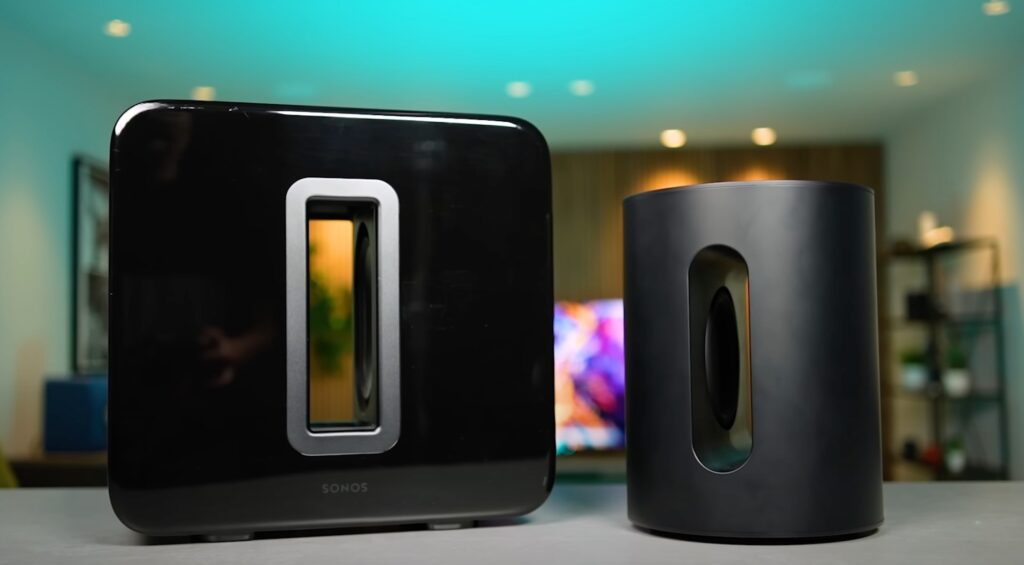
Sonos offers two compatible subwoofers for your home cinema, the compact Sonos Sub Mini and the Sonos Sub (Gen 3). Built to deliver more than just bold bass, these subwoofers are also designed to take the load of the lowest frequencies from your soundbar and other Sonos speakers. This in turn, affords your Sonos Beam more processing power to deal with dialogue and mid-range much more effectively.
From our extensive testing, we’d suggest the Sonos Sub Mini is the best match for the Beam (Gen 2); along with both being relatively discreet options, the pair compliment each other exceptionally well and make for a killer combination in those smaller or medium-sized home cinema setups.
More: Sonos Sub Mini vs. Sonos Sub (Gen 3)
Adding a Pair of Surround Sound Rears
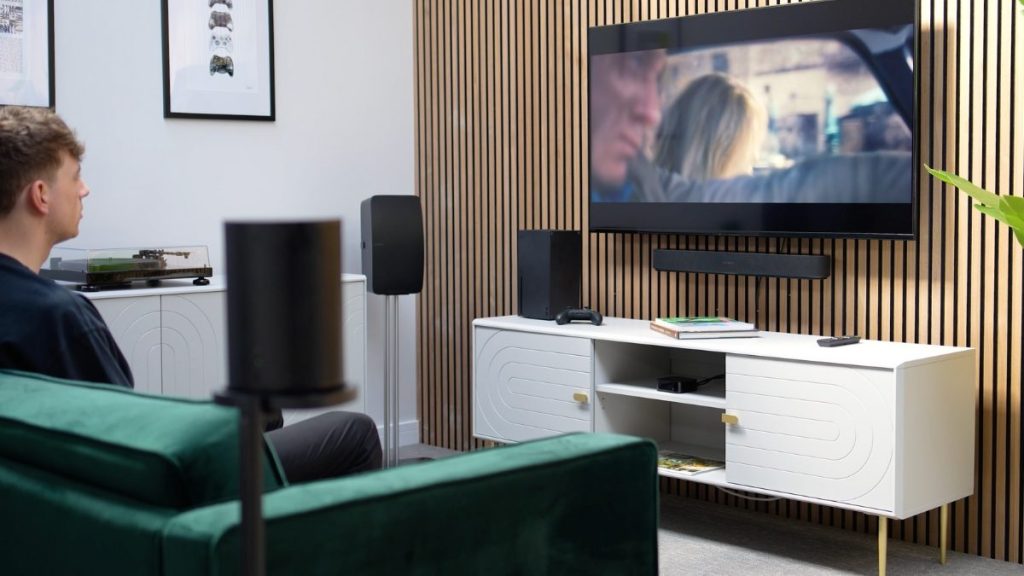
If rears are added to your Sonos home cinema, the Beam (Gen 2) will automatically adjust its audio output to stop using two of its arrays for surround sound audio and pass that duty over to your dedicated rear surround speakers. This frees up the processor in the Beam G2 to maximise height channel performance.
Sonos offers a great selection when it comes to rear surrounds, and the most popular option for adding an extra layer of immersion are the Sonos Era 100’s. Coming in at £498 a pair the Era 100's are compact, yet powerful speakers with a new acoustic architecture that enables stereo sound and rich bass.
If you’d like to take the immersion to another level, you can add a pair of Sonos Era 300’s instead, which are Sonos’ first ever upward-firing Dolby Atmos wireless speakers. These will come at the premium price of £898 a pair and may not be a necessity for most setups, but if you want unmatched immersion, this is the way to achieve it. You'll also benefit from our 6 Year Extended Warranty with any of these Sonos speakers when shopping with us as well as Free Delivery which is worth §considering.
| Other Sonos Rear Speaker options: Sonos One SL's Sonos Five's Ceiling Speakers In-Wall Speakers IKEA Symfonisk Range |
Note: To use in-wall or in-ceiling speakers, you will need a Sonos Amp to connect them wirelessly for a completely clutter free setup.
More: Adding Sonos Surround Speakers: How To Choose
More: Testing Every Sonos Beam (Gen 2) Home Cinema Setup
Sonos Beam (Gen 2) Additional Features
The Beam (Gen 2) is quick and easy to set up. Simply connect the power cord into the mains and the HDMI into your TV. Once connected, you will want to download the Sonos S2 app and follow the on-screen instructions to complete the setup. Once you’re finished, you can take your sonos speaker even further with the below features:
Voice Control
The Sonos Beam (Gen 2) features voice control built-in via Sonos Voice, Amazon Alexa and Google Assistant. Whether you want to turn the TV on and off, shuffle through your favourite tracks, or play your favourite podcast, you can do it all without lifting a finger. Of course, if voice assistants aren’t your thing, you can skip the setup process all together or simply mute the microphone for extra privacy.
Limitless Streaming
As well as being the perfect companion for your TV, the Beam (Gen 2) can also stream endless amounts of music, radio, podcasts, audiobooks and more straight to your speaker. You can stream directly from the Sonos S2 app or via the latest streaming platforms, like Spotify Connect and Apple AirPlay 2.
TruePlay Tuning
Sonos’ TruePlay Tuning is the quickest way to give your soundbar an instant boost. By using test tones to measure how sound reflects around the room, TruePlay fine-tunes your audio to the unique dimensions of your space and provides optimal performance. Unfortunately, you will need an iOS device in order to do it, but it’s definitely worth doing if you have access to a compatible device.
Speech Enhancement & Night Mode
The Sonos Beam (Gen 2) also features a speech enhancement feature to make vocals easier to hear and add an extra layer of clarity to the dialogue in your favourite films and shows.
If you enjoy late night watching, you’ll appreciate Sonos Beam (Gen 2)’s Night Mode. This essentially dampens the loudest parts of your audio and enhances the quieter tones to produce a more stable output. It’s the perfect solution if you’ve got neighbours nearby or just put the kids to bed.
Gaming Benefits
The Sonos Beam (Gen 2) is a great soundbar for gaming. With a wide range of codec support, more surround sound options are compatible, meaning that you can now play a variety of games in all of their glory. The faster processing chip also improves performance for gaming audio, while the dedicated 5 GHz Wi-Fi radio will minimise lag.
In our own tests, we found that the immersion and clarity of the Beam (Gen 2) were great when gaming. Its compact size makes it well-suited to smaller gaming TVs, and its expansive feature set make it a great option overall.
Compatibility with Sonos Ace
Following a series of post-launch updates, Sonos' headphones, Sonos Ace now integrates with the Sonos Beam (Gen 2) via a handy feature called ‘TV Audio Swap’. This feature allows you to send the audio from your Sonos soundbar straight to your Sonos Ace headphones with a single tap of a button.
Two pairs of Sonos Ace can be connected to a Sonos Beam at once, though only one pair can listen at a time. Switching between headphone audio and TV audio is effortless, requiring just a tap on the headphones or a quick adjustment in the Sonos S2 app. For more information read our Sonos Ace Review.
More: How to Connect Sonos Ace to a Soundbar with TV Audio Swap
More: Top 10 Sonos Soundbar Tips (Ray, Beam & Arc)
Sonos Soundbar Comparisons

Sonos Beam (Gen 2) vs. Sonos Ray
Sonos’ entry-level and smallest soundbar, the Sonos Ray, is the perfect choice for secondary spaces in the home like a bedroom, office or gym.
Performance-wise, the Beam (Gen 2) is the bigger and better soundbar and delivers a much more immersive experience for those with smaller to medium sized rooms. If you can justify spending the extra budget, its a no brainer, the Beam (Gen 2) is the one for you.
That’s not to say the Ray isn’t worth it. It’s still one of the best entry-level soundbars on the market, and it will be a great upgrade from standard TV audio alone, especially if you’re looking to upgrade the rooms you don’t spend the most time in.
It’s versatile, can be recessed into a media unit with ease, and it’s a great wallet-friendly alternative to the Beam (Gen 2). So, if you’re the type of person who’s got a limited budget or a smaller space to work with, the Ray will definitely be worth considering.
It’s worth bearing in mind that the Sonos Ray doesn’t have voice control or support for Dolby Atmos. It can cope with 5.1 surround sound formats like Dolby Digital, but it must downmix it into stereo in order to play it.
More: Sonos Ray Review
Sonos Beam (Gen 2) vs. Sonos Arc Ultra
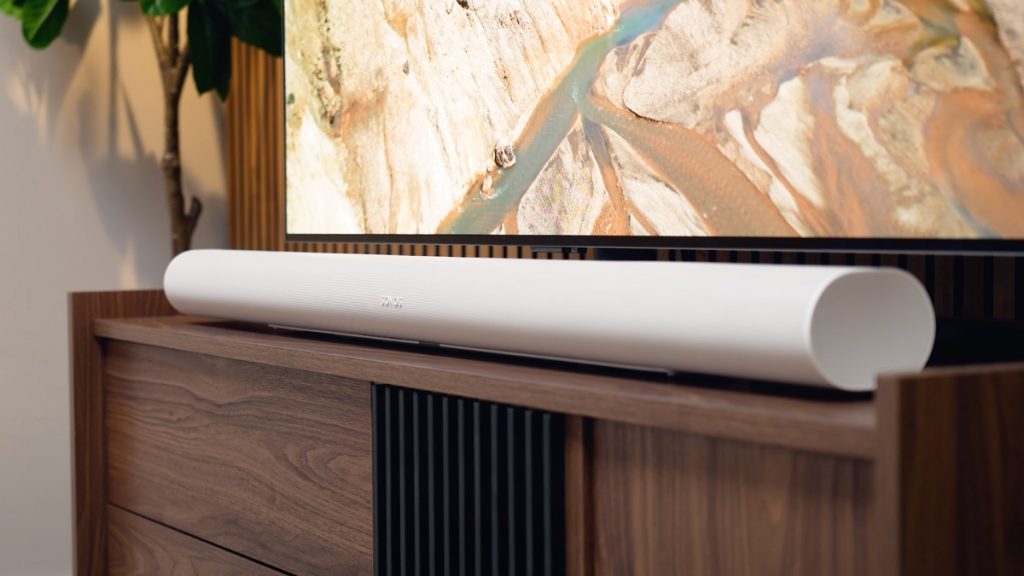
| Sonos Beam (Gen 2) | Sonos Arc Ultra | |
| Price | £499 | £999 |
| Dolby Digital | ✓ | ✓ |
| Dolby Atmos | ✓ | ✓ |
| HDMI ARC Support | ✓ | ✓ |
| HDMI eARC Support | ✓ | ✓ |
| Number of Speaker Drivers | 5 | 14 |
| Upward-Firing Drivers | ✖ | ✓ |
| Recommended TV Screen Size | 55" and below | 55" and above |
Released in 2024, the Sonos Arc Ultra is the brand's most impressive soundbar offering to date, taking the reigns as the flagship soundbar in the Sonos lineup from the original Sonos Arc.
Not just an incremental upgrade, the Arc Ultra features a totally revamped acoustic architecture capable of delivering a 9.1.4 Dolby Atmos surround sound, new SoundMotion™ bass woofer, Bluetooth 5.3 connectivity and more. This ensures superior bass, clearer dialogue, and a more immersive, detailed audio experience which In our opinion, has redefined what we can expect from a Sonos Soundbar.
While the Beam (Gen 2)’s psychoacoustic Dolby Atmos performance is undeniably impressive, especially for small-to-medium sized rooms, it simply won't be able to match the immersive impact of the Arc Ultra’s 14-driver array with dedicated height, side, and front channels.
The Arc Ultra has significantly widened the gap between Sonos's flagship and mid-range soundbars. So, while the Beam (Gen 2) remains a great choice for smaller rooms, the Arc Ultra offers a much better offering for those looking for the best of the best performance.
Read More: Sonos Arc Ultra Review: The Dolby Atmos Soundbar To Beat?
Sonos Beam (Gen 2) vs. Sonos Arc
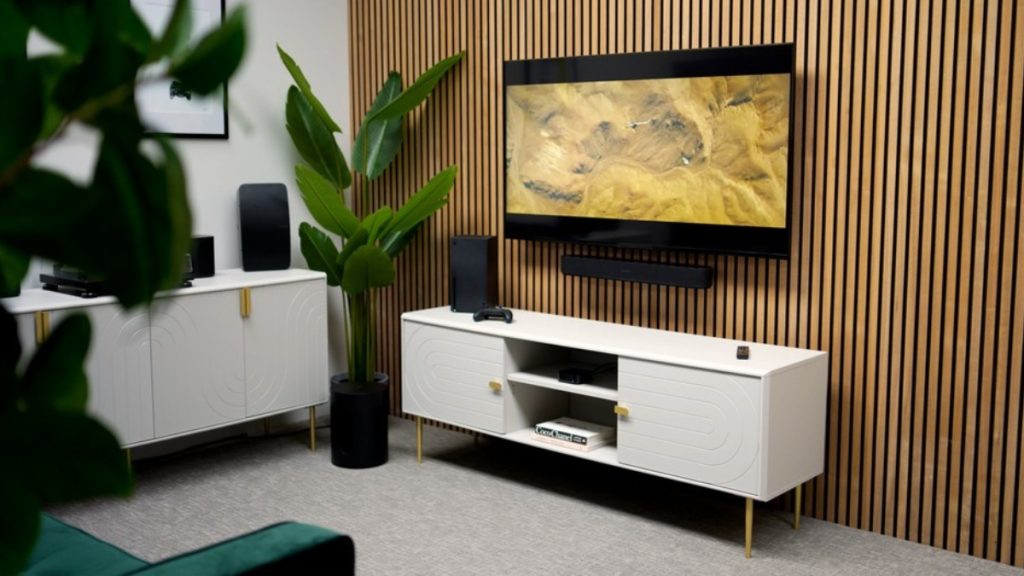
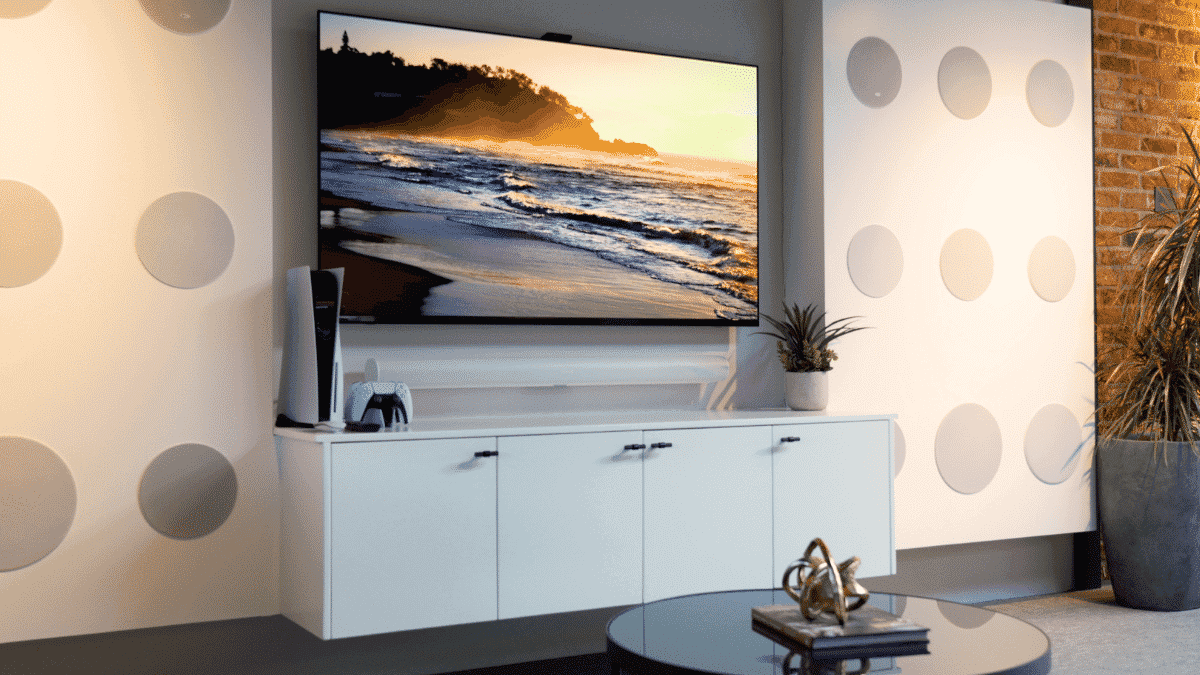
| Sonos Beam (Gen 2) | Sonos Arc | |
| Price | £499 | £899 |
| Dolby Digital | ✓ | ✓ |
| Dolby Atmos | ✓ | ✓ |
| HDMI ARC Support | ✓ | ✓ |
| HDMI eARC Support | ✓ | ✓ |
| Number of Speaker Drivers | 5 | 11 |
| Upward-Firing Drivers | ✖ | ✓ |
| Recommended TV Screen Size | 55" and below | 55" and above |
The Sonos Arc has long been one of Sonos’ best-selling soundbars, and even though its no longer their top-tier offering, its still one of the most immersive soundbar options currently available on the market. The Arc is bigger, broader and a better package all-round in comparison to the Beam. However, as is expected with a step up in performance, you will also notice a step up in price.
Featuring an 11-speaker array, this soundbar is a serial award-winner and delivers near-complete home cinema surround sound from a standalone speaker. Dedicated upward, sideways and front-firing drivers help to deliver exceptional three-dimensional Dolby Atmos surround sound with a wider soundstage than any other soundbar in the Sonos range.
The Beam isn’t a slouch with Dolby Atmos content, but its virtual psychoacoustic technology struggles to match the immersion levels of the Sonos Arc with its dedicated height channels. The Beam does offer exceptionally detailed and room-filling audio that’s hard to beat at its price point, but due to its smaller size, it can’t match the broadness or power of its much larger peer.
Other than the obvious differences in form, these soundbars do feature a range of similarities too, including Apple Airplay 2 and Voice Control capabilities via Amazon Alexa, Google Assistant & Sonos Voice.
More: Sonos Soundbar Buying Guide
Sonos Beam vs. Sonos Beam (Gen 2)
As one of the most popular soundbars under £500, there wasn't a great deal wrong with the original Sonos Beam. However, it wasn’t perfect and the Beam (Gen 2) has simply taken some learnings from the original Beam's failures and enhanced its best features to ensure its compact acoustic architecture performs even better.
No, the original Beam isn’t a bad piece of tech; it just lacks the modern edge needed to be a success in today's market. As expected, with more innovative technology under the hood, the Beam (Gen 2) is capable of creating a more immersive three-dimensional soundstage that will add extra layers to your listening experience regardless of what you're watching.
Other Sonos Beam (Gen 2) Comparisons
At Smart Home Sounds, we don’t take soundbar testing lightly. So, in order to really understand if the Sonos Beam (Gen 2) is right for you, we’ve also put it head to head with some of the best options from other brands like Bose and Sennheiser on our YouTube channel.
Watch: Bose 600 vs. Sonos Beam (Gen 2): The Best £500 Soundbar?
Watch: Sennheiser Ambeo Mini Review | Sonos Beam Killer?
Watch: Bose 300 vs. Sonos Beam (Gen 2): Battle of the Compact Soundbars
Should We Expect A Sonos Beam (Gen 3) in 2025?
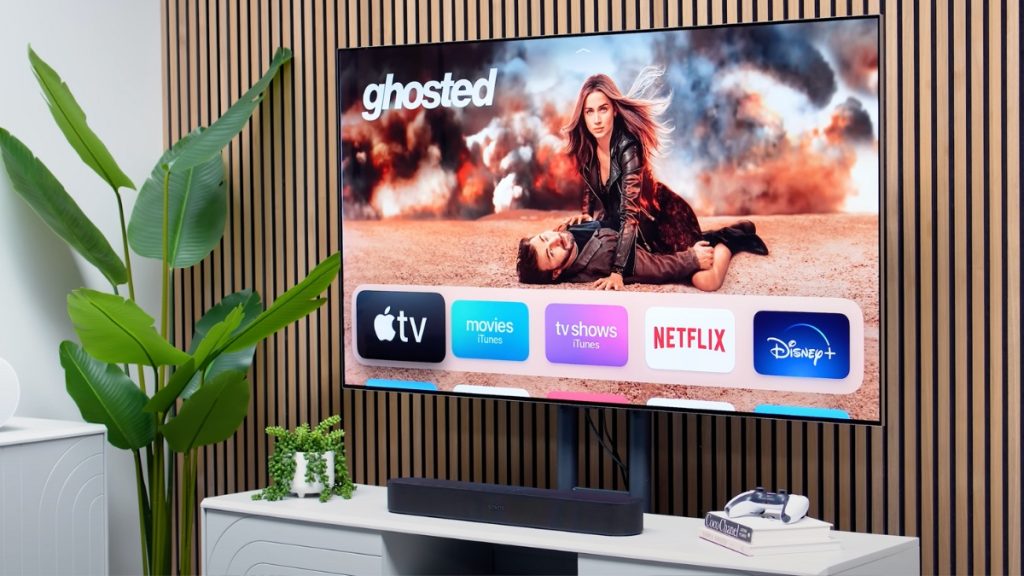
Disclaimer: Anything mentioned here is purely speculation and doesn’t represent what we’re going to see from Sonos in 2025.
Despite getting an upgrade in 2021, following the successful launches of the Sonos Era 100, Era 300, Sonos Move 2, Sonos Roam 2, Sonos Sub 4 and now the Sonos Arc Ultra in 2024, it begs the question: could Sonos’ class-leading compact soundbar get a third iteration?
Unfortunately, although there’s a clear sense that Sonos may be shifting their style slightly with their latest releases, the truth is we just don't know what they're planning for the future. In our opinion the Sonos Beam (Gen 2) is still very competitive in its current shape and arguably too young in its lifecycle to warrant a full-scale upgrade anyway .
The original Beam lasted a good four years before getting a refresh, and with so little coming close to the Beam (Gen 2) performance-wise at this pricepoint, its hard to imagine Sonos rushing to make that change.
The jury’s still out at the minute, and the only thing we can say for certain is that at the moment, all of Sonos' soundbars are more than capable of offering top-tier performance for their respective use cases, so right now seems like as good a time as any to get your hands on any one of them.
Our Verdict: Is The Sonos Beam (Gen 2) Worth It?
The Sonos Beam (Gen 2) is more than capable of handling your TV's audio on its own, but it's even more comfortable in a wider Sonos home cinema. It’s the perfect entry point to the world of home cinema, which only improves with the addition of any of the brand’s subwoofers or rear surround speakers.
Admittedly, it would’ve been nice to have dedicated upward-firing drivers on this one. However, for the price you’re paying, its very hard to argue with this soundbar.
Despite being released back in 2021, the Beam (Gen 2) is still young at heart and If you’re looking for a brilliant all-rounder that is versatile enough to handle anything you throw at it, you’re in the right place. The Beam is still big enough to deliver your audio with serious power, but small enough to leave you astounded once you hear it (even 2 years on). If that’s not a good sign that it's here to stay, we’re not sure what is.
Other Useful Content
Video: Sonos Soundbar Buying Guide 2023: Spend Wisely!
Video: Sonos Arc vs Sonos Beam (Gen 2): Closer Than We Thought?
Video: Sonos Arc vs Beam (Gen 2) & Sub Mini: Which To Buy
Blog: Sonos Beam Gen 1 vs. Sonos Beam Gen 2: Is It Worth The Upgrade
Blog: Sonos Home Cinema: The Complete Setup Guide
We hope you find this helpful, but of course, we realise that purchasing a new soundbar is a big decision, so we are more than happy to assist with any queries you may have.
Please reach out on:
| info@smarthomesounds.co.uk | |
| Live Chat on our Website | |
| 0800 677 1100 |


